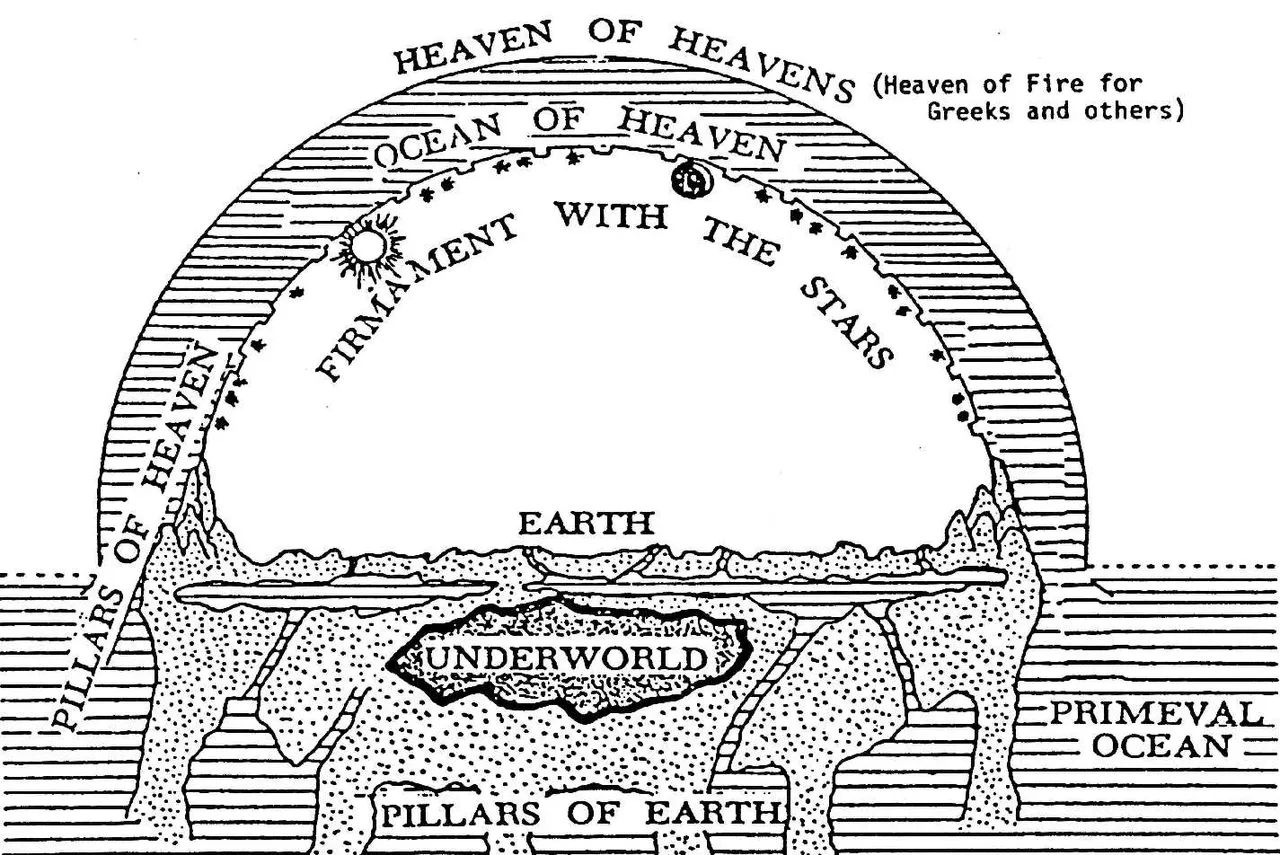During my years raised in a evangelical Christian landscape, I experienced countless claims by pastors and Sunday School teachers that a literal reading of the Christian Scriptures mandated that the world be A) under approx. 10,000 years old, B) created in the span of six days, C) absent of the evolutionary development of human life, and D) presupposed as an oblate spheroid. Although countless Young Earth Creationists (e.g. the infamous Ken Ham) insist that the contemporary fundamentalist assertion that the Earth is young and round, their ancient predecessors claimed otherwise, insisting in a Jewish flat earth.
For those of you unfamiliar with the inception of the Christian religion, the events of the New Testament takes place within the Hellenized landscape of Second Temple Judaism, meaning of course that Christianity is a development from classical Judaism. Many Church communions today claim to be the actual nation of Israel (e.g. the Catholic and Orthodox Churches), based on the notion that Second Temple Judaism was fulfilled and furthered by the advent of Jesus of Nazareth which marked a milestone in the Abrahamic timeline.
What is peculiar, however, is the fact that many Christians presuppose that the contemporary "Young Earth Creationist" (YEC) interpretation of the Bible is the literal approach taken by the original recipients of the Old Testament (i.e., the ancient Jews). This is not the case at all, and some of the oldest Jewish documents available to us today also say otherwise.
The Hebrew Bible nowhere specifies the Earth's shape, but repeatedly presupposes the commonly conceived ancient notion of a Jewish flat earth. For example, in the Book of Isaiah, it states, "He sits enthroned above the circle of the earth, and its people are like grasshoppers. He stretches out the heavens like a canopy, and spreads them out like a tent to live in," (Isa. 40:21-22). Other passages also mention that the Earth is stationary and suppose that the sun and moon are minor bodies revolving around the Jewish flat earth.

It wasn't until the 4th century BCE when the Hellenized concept (promulgated by the philosophers Pythagoras and Aristotle, among others) of a globe-world began to infiltrate Hebrew thought, and it was at this point when Jewish cosmogonies began to be fitted to its Greek context. Interestingly, not only did Judaism have the concept of a flat earth during the penning of the Old Testament, but many systems in the Mesopotamian region also share similar constructs with that of the cosmos in the Old Testament. Even prominent figures such as Homer and Hesoid in The Shield of Hermes depict a flat-earth framework that would have been entirely uncontroversial at the time.
The Jewish people upon reception of the Book of Genesis would have interpreted it "literally," far more so than many of their ideological successors today. The narrative of Genesis 1 is the foundational plot for an Abrahamic cosmogony. In a plain reading of the narrative, God created a flat, disc-like or rectangular earth upon pillars surrounded by a solid dome (i.e., the firmament), within which are the sun, moon, and stars amidst an aerial ocean. Above this dome, the god Elohim is traditionally understood to be enthroned in a celestial realm in an eternal council with lesser divine beings. During the period of Second Temple Judaism, the Jerusalem Temple was understood as a gateway to ascend the dome's barrier between man and God, acting as a sort of meeting place.
To digress from the topic of ancient cosmogonies, let's turn our gaze towards contemporary iterations of the ancient Hebrew flat-earth within a dome. The freshest instance is likely the recent dystopian science fiction film The Hunger Games, directed by Gary Ross and based on the novel by Suzanne Collins. In The Hunger Games, 24 teenagers are forced into an arena with a dome and are made to kill each other. Only one participant will emerge victoriously and is promised a life of wealth and prosperity. The dome used in the novel and film closely resembles that of the Jewish cosmos depicted above.The entire plot of the Hunger Games is essentially a quasi-Zionist script between the Capitol and the Resistance, i.e., between Israel and Palestine. The military of the Capitol (Israel) is technologically advanced and is nearly untouchable by the Resistance (Palestine). Its rulers boast totalitarian authority over all districts, including a fascist claim of owning territory that has no desire to be under its rule. Naturally, the districts rebel, and the most iconic reality that we can typify this to is the advent of Gaza, imminently actualized in the al-Wafa bombing in Gaza.
It is almost as if Suzanne Collins was relatively influenced by the modern Israel-Palestine conflict and wrote a dystopian novel depicting a similar struggle on a larger scale. With Lions Gate Entertainment depicting a rather fascinating "dome" arena wherein the Hunger Games contestants are forced to face off, the relatability to the Jewish world is endless. The words of Hunger Games protagonist Katness Everdeen rally those who yearn for liberation in the Middle East: "You can torture us and bomb us and burn our districts to the ground, but do you see that? Fire is catching! And if we burn, you burn with us!”